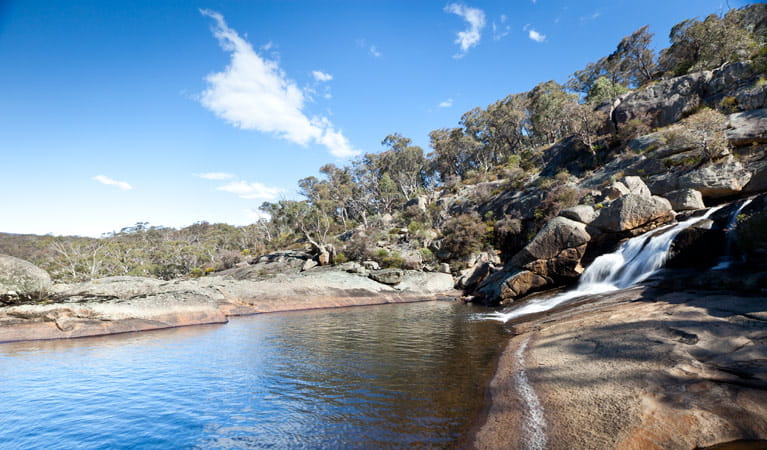Wadbilliga National Park
Overview
Wadbilliga National Park is perfect for self-reliant bushwalkers and campers. Go hiking, camping, birdwatching or mountain biking and explore this wonderful park.
Read more about Wadbilliga National Park
Wadbilliga National Park features remote and rugged wilderness that will leave you feeling like you’ve truly escaped into the great outdoors.
The scenery here has been compared to Kakadu National Park, with steep gorges carved into dramatic ancient granite cliffs contrasting with wide, undulating plateaus from the high escarpment country down to the coastal plain.
Wadbilliga has deliberately been left in a pristine state to form a haven for the many animals and birds that take refuge here, and there is also an incredible range of plant life. Among the endangered animals you may see are the spotted-tailed quoll. Powerful, masked and sooty owls can be heard by night, and by day diamond pythons may be seen sunning themselves on the plentiful rocky outcrops.
This vast, untamed wilderness is popular with well-equipped campers, self-reliant bushwalkers and photographers. Be sure not to miss seeing the striking Tuross Falls and Tuross River Gorge as well, which are truly unforgettable sights.
Local alerts
For the latest updates on fires, closures and other alerts in this area, see https://www.nationalparks.nsw.gov.au/visit-a-park/parks/wadbilliga-national-park/local-alerts
Contact
- in the South Coast and Snowy Mountains regions
Wadbilliga National Park is always open but may have to close at times due to poor weather or fire danger.
-
-
Narooma office
02 4476 0800
Contact hours: Monday to Friday, 9am to 4pm. Office open by appointment only. Closed public holidays. - 10 Graham Street, Narooma NSW 2546
-
Email: npws.eurobodalla@environment.nsw.gov.au
-
Narooma office
-
-
Bombala office
02 6458 5900
Contact hours: Monday to Friday, 8.30am to 4pm. - 153 Maybe Street, Bombala NSW 2632
-
Email: npws.sapphirecoast@environment.nsw.gov.au
-
Bombala office
Visitor info
All the practical information you need to know about Wadbilliga National Park.
Map
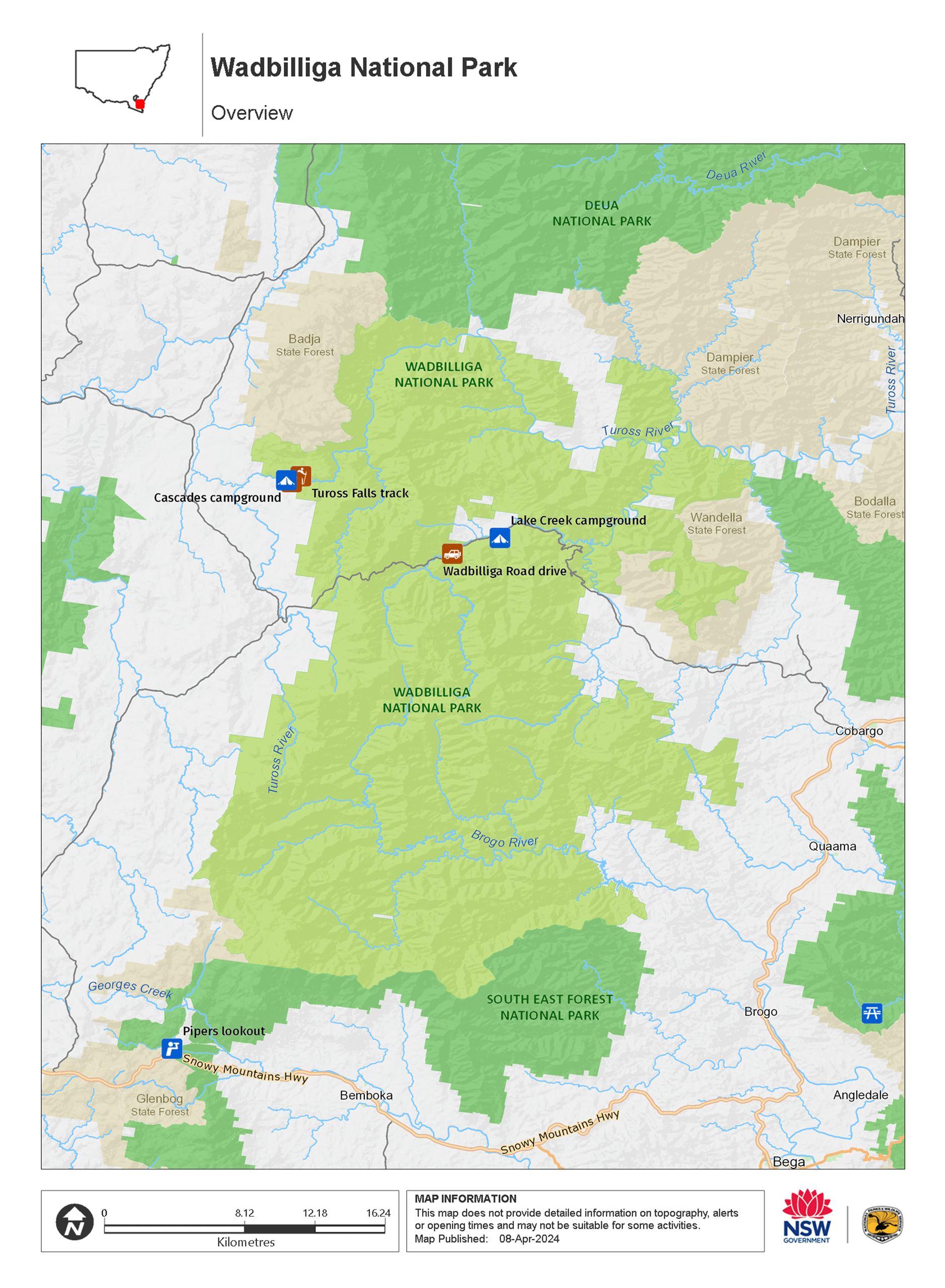
Map legend

Getting there and parking
Get driving directions
Parking
- Cascades campground See on map
By bike
Check out the Bicycle information for NSW website for more information.
By public transport
Wadbilliga National Park is not accessible by public transport.
Best times to visit
There are lots of great things waiting for you in Wadbilliga National Park. Here are some of the highlights.
Autumn
Walk to Tuross River Falls now that the days are getting a bit cooler. Or, follow one of the many unsealed roads through Wadbilliga on a mountain bike.
Spring
Walk to Turross River Falls for a great half-day adventure. Or, take a back-country hike to Wadbilliga Trig.
Summer
Lilo and swim in the many gorgeous pools at the cascades. Camp at the Cascades and watch for greater gliders at night.
Weather, temperature and rainfall
Summer temperature
Average
8°C and 23°C
Highest recorded
38.3°C
Winter temperature
Average
-3°C and 10°C
Lowest recorded
-10.5°C
Rainfall
Wettest month
December
Driest month
August
The area’s highest recorded rainfall in one day
256mm
Facilities
Maps and downloads
Prohibited
Pets
Pets and domestic animals (other than certified assistance animals) are not permitted. Find out which regional parks allow dog walking and see the pets in parks policy for more information.
Smoking
NSW national parks are no smoking areas.
Nearby towns
Nimmitabel (35 km)
Nimmitabel is a small township on the edge of the Snowy region. The rolling plains are amidst a rich, fertile agricultural zone. The Court House and Lock-Up Museum, that chronicles the history of the town.
Cooma (37 km)
The Snowy Hydro Discovery Centre is a state-of-the-art visitor facility showcasing the story of the Snowy Mountains Hydro-Electric Scheme from the early construction days to the role the scheme plays today in the development of Australia.
Bermagui (45 km)
Bermagui is a colourful port, famous for its deep-sea fishing. It's on the estuary of the Bermagui River, close to national parks.
Learn more
Wadbilliga National Park is a special place. Here are just some of the reasons why:
Aboriginal cultural heritage
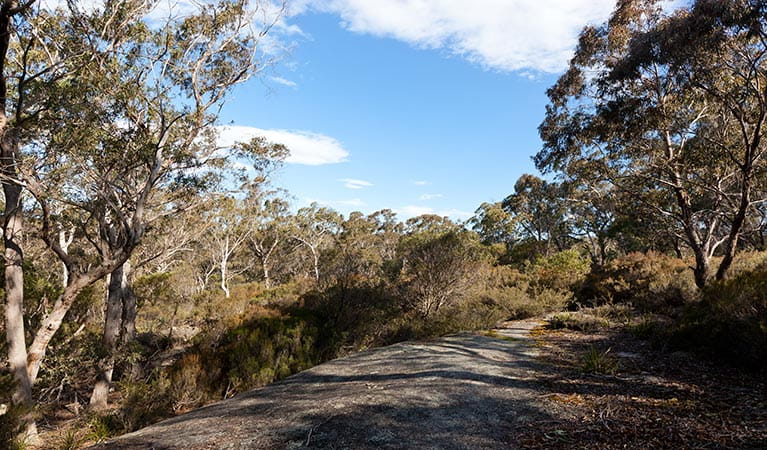
The Yuin people consider Wadbilliga National Park a sacred place and many sites in the park are strongly associated with Dreamtime stories. The dissected, rugged escarpment contains a network of bridle tracks that follow both high country and river courses, which Aboriginal people originally used. The bridle tracks are also the most tangible historical link with the first Europeans in the area and were used for transporting produce and moving stock from one location to another. The park is abundant in traditional foods and medicines.
A natural animal sanctuary
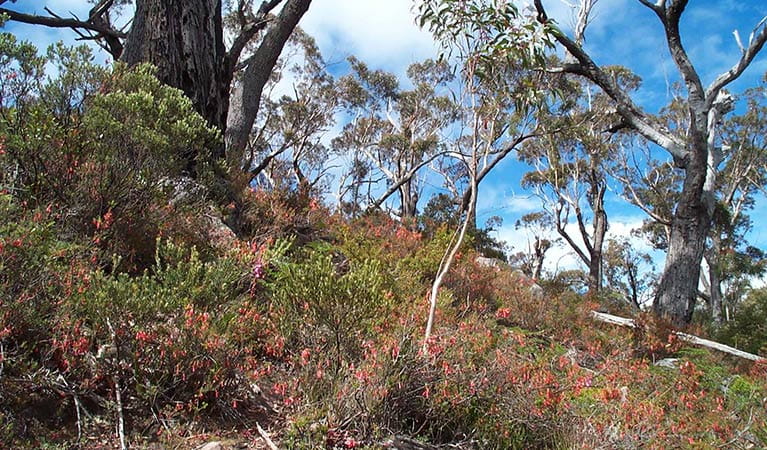
Due to the rugged and isolated nature of the park, animal populations here have remained relatively undisturbed. Many of the park's animals are large marsupials such as swamp wallabies, eastern grey kangaroos and wombats. There are also possums, platypuses and echidnas and one of the biggest greater glider populations in all of Australia. The birdlife is varied too, with over 120 native species. Lyrebirds are common as are many colourful and tuneful bush birds.
- Cascades walking track and viewing platform Cascades walking track takes you to a viewing platform with scenic views of the spectacular Tuross River, which cascades into a refreshing pool that’s ideal for a summer swim.
- Tuross Falls walking track Turross Falls walking track is a medium difficulty 4km bushwalk at Wadbilliga National Park featuring scenic views, waterfalls, picnicking opportunities and birdwatching.
A glimpse of gold mining history
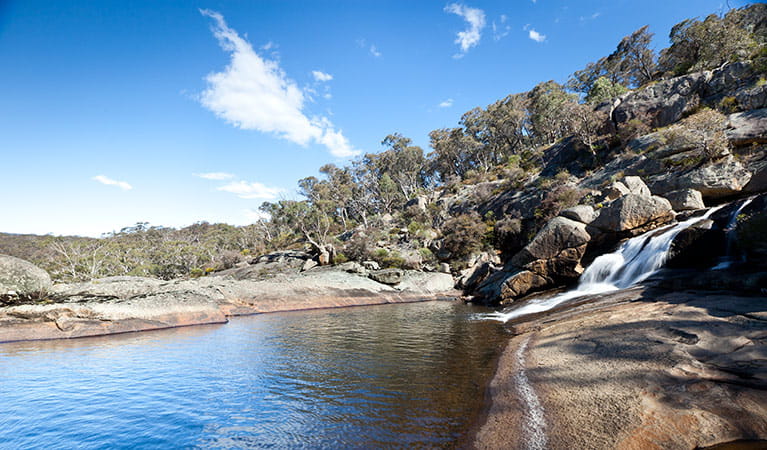
The surrounding area has a variety of artefacts, structures and features that hark back to gold and silver mining eras, as well as the early forestry history of the local area. Today, visitors can still view various mining remains that are evidence of once arduous searches for gold and other precious materials.
A botanist's wonderland
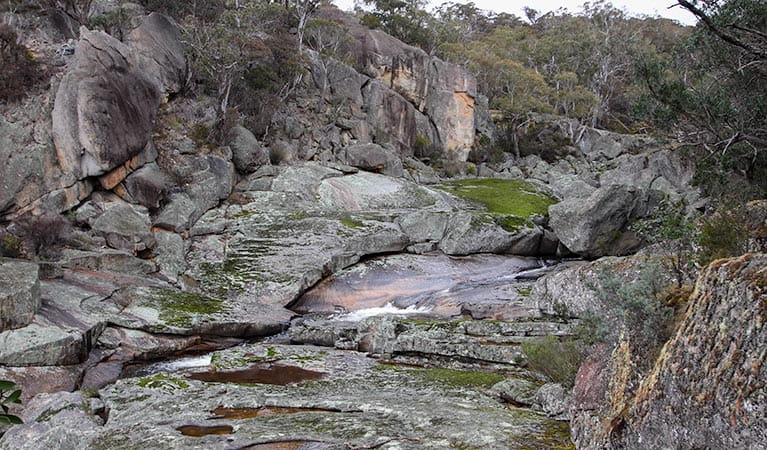
Wadbilliga has many impressive examples of open forest, woodland, heath, swamp, bogs and numerous pockets of rainforest. There are some rare species of eucalypt and acacia that do not occur anywhere else. In the Wadbilliga Valley, yellow box and forest red gum can be seen, while on the ridge tops tower large stands of silvertop ash with snow gums at high altitudes. The Wadbilliga Plateau also has dwarf she-oaks and rare stunted mallee eucalypts.
- Cascades walking track and viewing platform Cascades walking track takes you to a viewing platform with scenic views of the spectacular Tuross River, which cascades into a refreshing pool that’s ideal for a summer swim.
Education resources (1)
What we're doing
Wadbilliga National Park has management strategies in place to protect and conserve the values of this park. Visit the OEH website for detailed park and fire management documents.

